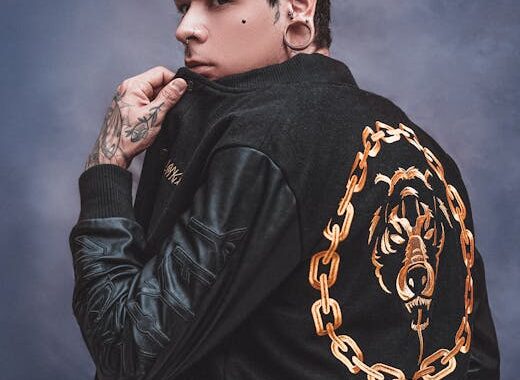China Hairstyle: Exploring the Elegance of Traditional Twin Buns
The traditional Chinese hairstyle featuring twin buns, often referred to as jiǎzi tóu (假子头) or variations thereof, represents a rich tapestry of cultural significance, evolving through dynasties and reflecting societal norms. This hairstyle, far from being a mere fashion statement, tells a compelling story of history, social status, and artistic expression. Understanding its nuances requires delving into its historical context, regional variations, and the symbolism embedded within its intricate designs.
A Journey Through Time: The Evolution of Twin Buns in Chinese Hairstyles
The exact origins of the twin bun hairstyle in China are difficult to pinpoint precisely, lost in the mists of ancient history. However, archaeological evidence and depictions in ancient art suggest variations of this style have been present for centuries. Early forms likely involved simpler arrangements of the hair, possibly tied with ribbons or simple pins. As dynasties progressed, techniques refined, and materials diversified, leading to the elaborate styles we associate with later periods. The Tang Dynasty (618-907 AD), for instance, saw a blossoming of elaborate hairstyles, with twin buns often adorned with jewelry and decorative hairpieces. This era is often depicted in art and literature as a period of great prosperity and cultural exchange, influencing hairstyle trends across the country. [See also: The Tang Dynasty and its Influence on Fashion]
Variations Across Dynasties and Regions
The style wasn’t static. Variations of the China hairstyle, the traditional twin buns, emerged across different dynasties and regions. The Song Dynasty (960-1279 AD) saw a shift towards more restrained elegance, while the Ming and Qing Dynasties (1368-1644 AD and 1644-1912 AD, respectively) brought distinct regional differences in both the size and styling of the buns. In some regions, larger buns were favored, signifying prosperity and status, while in others, smaller, more compact buns were the norm. The materials used—from simple hairpins to intricately carved jade and gold ornaments—also reflected the wearer’s social standing and the occasion. The hairstyle was often a vital component of a person’s overall appearance, signaling their place within society. [See also: Regional Variations in Chinese Hairstyles]
The Symbolism of the Twin Buns
Beyond its aesthetic appeal, the twin bun hairstyle held symbolic meaning. In some interpretations, the twin buns represented balance and harmony, reflecting the duality found in nature and life. The symmetrical arrangement, a key element in traditional Chinese aesthetics, emphasized order and balance. In other contexts, the size and adornments of the buns could signify marital status, age, or social rank. For instance, unmarried young women might wear their hair differently than married women, using the hairstyle as a social marker. The intricate details within these styles provided a rich visual vocabulary that spoke volumes about the individual wearing it. The traditional Chinese hairstyle, featuring twin buns, was far more than mere adornment; it served as a visual communication tool.
The Art of Creation: Techniques and Materials
Creating the perfect pair of twin buns was a skill passed down through generations. It required patience, dexterity, and a deep understanding of hairdressing techniques. The process often involved elaborate preparations, including washing, conditioning, and carefully combing the hair. Various tools were used, ranging from simple combs and hairpins to specialized implements for shaping and securing the buns. Hair extensions were sometimes incorporated to achieve the desired volume and length, particularly for formal occasions or celebratory events. This detail alone showcases the skill and artistry involved in constructing these intricate hairstyles.
- Hairpins and Ornaments: Elaborately crafted hairpins, made from jade, gold, silver, or other precious materials, were frequently incorporated, reflecting the wearer’s wealth and status.
- Ribbons and Fabrics: Ribbons and other fabrics were used to add color, texture, and visual interest to the hairstyle.
- Hair Extensions: These were frequently used to add volume and length to the hair, making the buns appear fuller and more impressive.
The Twin Buns Today: A Modern Revival
While the traditional methods of creating the China hairstyle, the twin buns, might be less common in contemporary China, the hairstyle’s influence continues to be felt. A modern revival of the twin buns is seen in contemporary fashion and media, often adapted and reinterpreted to suit modern sensibilities. Young women, especially, are embracing this beautiful hairstyle, showcasing its versatility and timeless appeal. We are now seeing a fusion between traditional techniques and modern styles, leading to new and exciting interpretations of this classic hairstyle. Many modern interpretations maintain the essence of the traditional style while integrating elements of current trends, creating unique and personalized looks. The cultural significance of this hairstyle continues to resonate, inspiring designers and artists in China and worldwide.
China Hairstyle: Traditional Twin Buns in Popular Culture
The enduring legacy of the traditional Chinese twin bun hairstyle is also evident in its representation in popular culture. From period dramas to modern fashion shoots, the hairstyle has been used to depict characters and settings from different eras and social classes. This visual representation serves to both educate and entertain, ensuring that the rich history and cultural significance of the China hairstyle and its traditional twin buns continue to engage new audiences.
Conclusion: A Timeless Symbol of Chinese Culture
The traditional Chinese hairstyle featuring twin buns is more than just a hairstyle; it’s a living testament to the country’s rich cultural heritage and artistic traditions. Its evolution through centuries reflects the changing social landscape and the enduring human desire for self-expression. Whether appreciated for its historical significance, artistic merit, or modern interpretations, the China hairstyle’s traditional twin buns retain their power to captivate and inspire.
The study of the China hairstyle and its traditional twin buns provides a fascinating lens through which to understand Chinese culture, art, and history. Its ongoing relevance demonstrates its lasting impact on fashion and popular culture worldwide.

